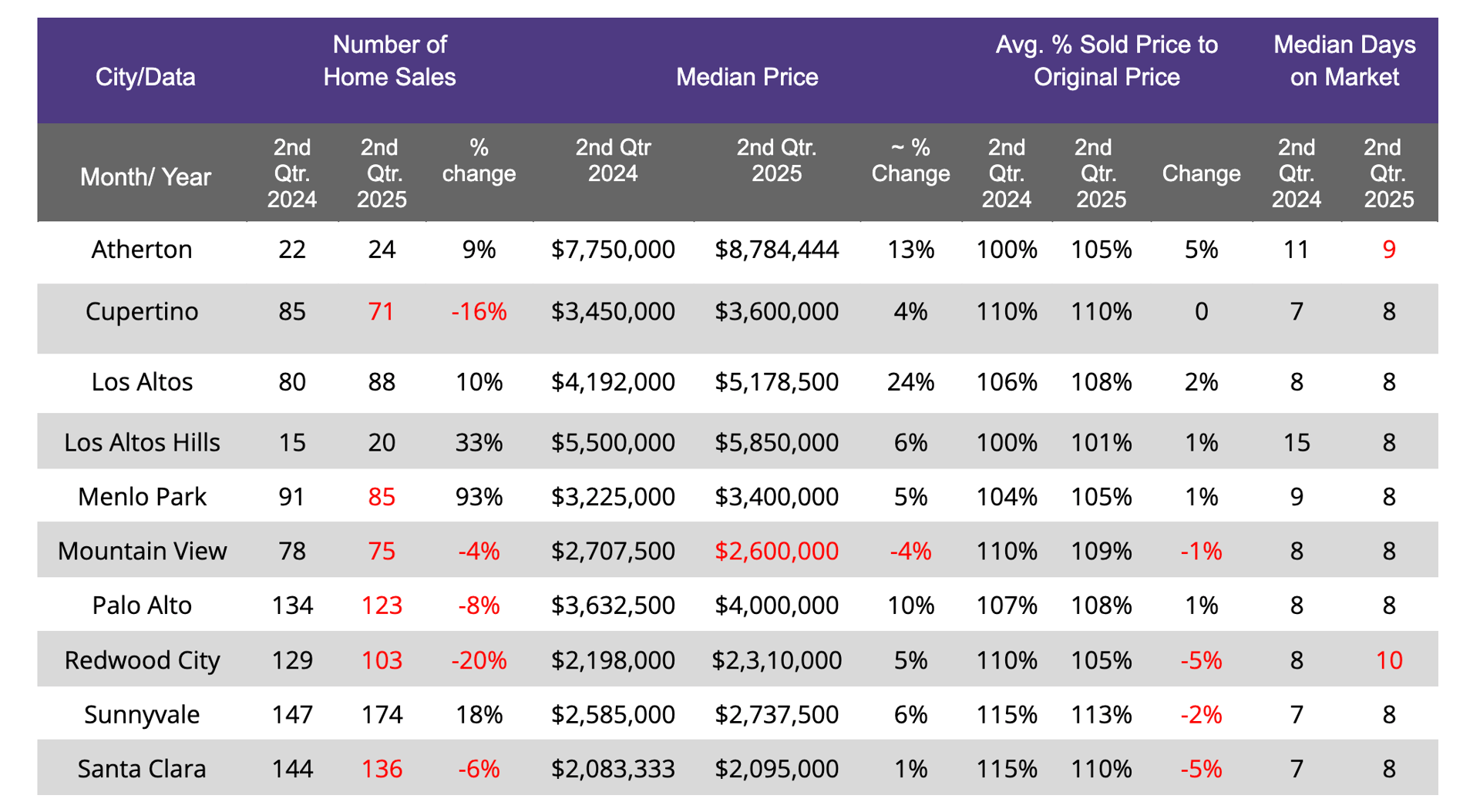The second quarter numbers are in, and they reveal a Silicon Valley real estate market that has been tested and proven its durability. But to understand the data, it helps to recall what happened earlier this year.
The March Market Test
You'll recall that in late March, the tariff announcements sent the S&P 500 down 13.7% in just two weeks. Many of my clients were understandably concerned about moving forward with their home purchases during that volatility. What's notable is that the market recovered substantially within two months. By the end of the second quarter, both buyers and sellers had adjusted to this new reality and were making informed decisions based on current conditions rather than fear.
The Luxury Market Response
In the high-end segment, we've seen healthy sales. Los Altos median prices increased 24% to over $5 million, with sales volume up 10% year-over-year. Los Altos Hills and Atherton showed similar patterns: higher prices, increased sales, and properties selling within 8-9 days. Atherton's median reached $8.78 million, which might suggest that buyers are feeling confident despite the earlier market uncertainty. They are either undeterred by the volatility or view real estate as a more stable investment than equities.
Mid-Tier Market Dynamics
In Cupertino, Palo Alto, and Mountain View, we're seeing more measured activity. Sales decreased 4-16% compared to last year, while median prices remain elevated at $2.6-$4 million. Buyers in this segment tend to be more sensitive to market fluctuations, particularly those whose wealth is tied to stock compensation. Mountain View stands out with both sales and prices down 4%. Several of my clients in this market have taken a more deliberate approach, carefully monitoring their equity positions before determining their down payment capacity. This creates opportunities for well-positioned buyers who can move quickly when the right property becomes available.
Meanwhile, Sunnyvale's numbers tell a different story. Sales increased 18% while prices rose only 6%. Given this area's strong double-digit median price appreciation last year, the current numbers suggest that this city could be heading towards moderate growth by the end of the year. This could represent compelling value for buyers seeking Silicon Valley proximity without premium pricing.
Lower-Tier Markets Show Buyer Caution
One of the more accessible markets, Redwood City and Santa Clara, both reflect the new buyer caution that emerged after the spring market volatility. Redwood City saw the most significant pullback with sales down 20% while Santa Clara showed more resilience with only a 6% decline. Most telling, buyers in both markets are now offering closer to the asking price rather than engaging in bidding wars. This is a significant shift from the aggressive competition during the same period last year. Buyers have become more deliberate and price-conscious.
Final Takeaways
The impact of the tariff announcement proved far less catastrophic than many had feared, with the market adapting rather than breaking under pressure. The high-end segment remains undeterred by volatility, while low and mid-tier buyers have shifted their focus toward value rather than simply winning at any cost, becoming more selective rather than disappearing entirely. This has resulted in healthy overall demand, with homes still selling under 10 days when priced appropriately. What we're witnessing isn't a market on the verge of collapse, but rather one that has learned to navigate uncertainty effectively. The fact that Silicon Valley real estate could absorb such a significant stock market shock while continuing to function normally is actually an encouraging sign for the broader economy.
Connect with Wendy at [email protected] for personalized insights and strategies to make the most of our current market conditions.
(This report covers from Redwood City to Cupertino. Redwood City and Menlo Park fall under San Mateo County. Palo Alto, Mountain View, Los Altos, Cupertino, Sunnyvale, and Santa Clara fall under Santa Clara County. Data include single-family home sales only. Data is from CA MLS and is deemed reliable but not guaranteed. Private sales are not included.)




